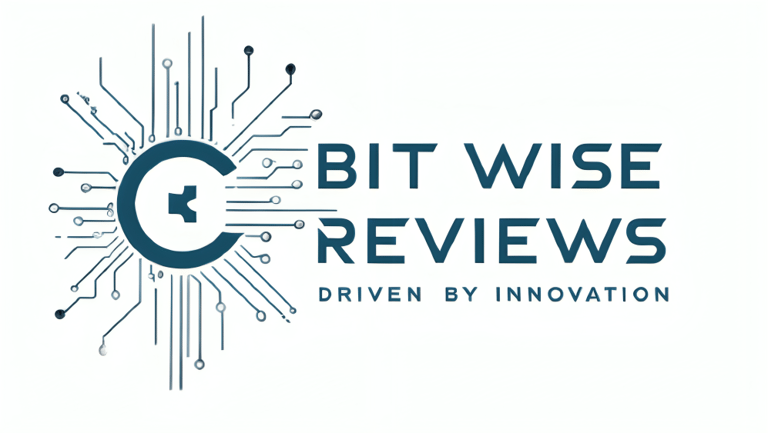What are The Best Free Remote Collaboration Tools in 2025
Priyanshu - Bit Wise Reviews
10/22/2025


Introduction
With the evolution of the world into one giant home office, one of the cafes, or one side of the globe, remote teams have distinct problems: how to be on track, display screen side by side, how to work internationally, how to make decisions, and being deprived of the benefits of physical contact. When your team is equipped, you no longer experience the distance when working at different locations; it simply feels like being a team.
According to Buffer’s 2025 State of Remote Work Report, over 71% of teams now collaborate entirely online, making reliable tools more vital than ever.
But being honest about it, in this post, I will reveal why this is not a simple task of working remotely until you are armed with the right tools, which tools are technically worth it, and why the combination you identify would be the best fit for your team in 2025.
What are the features that are required in great remote collaboration tools?
The important aspect is a definite set of features that must be taken into account when selecting any software. Your tool stack must suit the operational needs of your team to achieve user intent and the workflow objectives of your team. Some of the major features displayed by the best reviewers are as follows:
Control and annotation screen or desktop sharing in real-time.
Real-time messaging, file transfer, and co-working of documents between devices.
Task and project management functionalities (cards, boards, and timelines).
Security, compliance with other applications/ tools, and scalability.
Free plan utility - Is the free version really allowing people to work together, or simply a teaser holding back?
As soon as you cover all these bases with your tool, your team can work and not get frustrated by tech.
A 2025 Gartner Digital Collaboration Survey found that teams prioritize real-time editing, security, and scalability above all else when selecting tools.
Top Free Desktop Sharing Software
Super, we can magnify the most frequent remote work of remote teams, sharing your screen, providing supporting control, or working together in real time on another computer. These are the best free desktop sharing software options for 2025.
TeamViewer:
This is an old favorite, and it is compatible with most OSs. In addition, it has a myriad of features. It is considered one of the best free remote desktops.
AnyDesk:
Lightweight, multi-platform platform and performance-wise good. A good choice of fast remote sessions.
RustDesk:
Open-source and free remote desktop application using encryption and building a community. Good, in case you want an open toolchain.
Chrome Remote Desktop:
It is a browser-based application and is simple to install in case of simple remote viewing; however, when you need quick access, it is a welcome relief.
Any one of these will provide you with the foundation of the real-time screen work: be it a design review, a customer support session, or a joint debug.
Personally, I’ve used AnyDesk and TeamViewer interchangeably — AnyDesk felt lighter for quick support, while TeamViewer offered deeper control.
Best Free Remote Work Collaboration Tools.
Being able to share your screen is a wonderful thing, yet it is only part of the coin as you still require the tools that enable you to talk, arrange work, and share everything with ease. The following are some of the free tools that, in fact, work well to be used by remote teams in their day-to-day activities.
Slack (Free Tier) -
File sharing, integrations, channel-based chat. A team communication place.
Microsoft Teams (Free Version) -
It is an integration of chat, meetings, co-editing, and so on, particularly when you are already committed to the Microsoft ecosystem.
Trello -
A Visual Work Board that is easy to use with a drag-and-drop interface; it works well with small projects and agile systems.
Asana -
More task and work management than Trello; it would be helpful to the teams that require organization.
ClickUp -
An all-in-one platform combining tasks, documents, and chat - Stopping to consider as a company expands.
Integrate a desktop-sharing application with either of these apps, and all of a sudden, collaborating becomes simple in the sense that you can talk, share screens, work on tasks, as well as share files with no problems at all.
Read More: Worried About EV Battery Costs? Here’s Why You Shouldn’t Be in 2025
How to Select the Best Collaboration Tools?
The word best is always relative; the only thing that counts is the best in your team. The following is a basic decision model:
Step 1: Find out what you are most truly in need of.
Do you have regular screen share and remote control meetings (eg, UX review, remote support)?
Spend more time chatting, reviewing documents, or managing tasks?
Commonly in need of asynchronous updates, time-zone multitudes?
Step 2: Correlation of Free-Plan Limitations.
Number of users in the free plan?
Storage limit?
Feature restrictions?
Paywall Knowledge bases?
Step 3: Ecosystem Fit
Do you use Google tools? Google Workspace + Chrome Remote Desktop may be the easiest.
You're Microsoft-heavy? - Teams + OneDrive.
Must be flexible and mix-and-match? - Either Slack + Trello + AnyDesk.
Step 4: User Adoption & Ease
The value of money for the most expensive tool is nothing when no one will use it. Choose one that your team can get on with in a short time.
A study by Forbes Advisor (2025) revealed that tool simplicity and quick onboarding reduce churn rates by 40% in remote teams.
Step 5: Peep ahead? - Does this still work as your team expands?
Will the tool increase with the increase in your team? How much is it with you with a free tier? Premeditating is the way to avoid painful migrations.
Use the tips, and you will have tools that work well with your team, not necessarily those that sound good online.
Read More: Web3 Gaming Platforms: How Players Will Own the Future
Getting the most out of Tools: tricks and tips.
OK--so you've picked your tools. The following are working guidelines that can be used to obtain the best out of them:
Unify on fewer tools: Do not have 5 chat applications, 3 task boards, and 2 screen-share applications. Pick 1 of each category.
Bring found elements of your team to the table: Links, naming terms (such as #proj-X, board Sprint), and rapid training save time.
Share the screen proactively: 5 minutes of shared screen usage will solve a problem more quickly than a 20-message chat discussion.
Make asynchronous updates: In a distributed workforce, allow individuals to update common documents or boards to avoid compelling them to have a meeting together.
Integration leverage: There are numerous tools that go hand in hand. e.g., Trello cards posted to Slack, AnyDesk links in Teams, etc.
Monitor your tool usage- you will realize when you begin reaching limits on users, storage, and other interconnected apps. It is high time to upgrade or switch.
Remember about security: Free tools might not be as well-protected as their paid counterpart. You should use a strong password and 2FA; you should not make it susceptible to wrong tools and facilities.
These habits make your tools more than just one more application on your screen, but, in fact, they make it go an extra mile in getting your team to work together more effectively.
“Cybersecurity researchers recommend enforcing two-factor authentication and role-based access even for free SaaS tools.”
(https://www.csoonline.com/article/remote-work-security-best-practices)
Read More: Nintendo Switch 2: Redefining Innovations in Portable Gaming
Conclusion
Remote working is not a fad anymore, when there is an element of proper teamwork, which represents a plus. Good tools don’t have to be expensive — combine a few of the best free collaboration and screen-sharing options, and your team will have everything it needs to do great work.
According to Harvard Business Review, successful hybrid teams rely on clarity and tool simplicity rather than tech overload.
It is worth remembering: it is not the ideal tool you are looking for, but the one that will fit into the workflow of your team. Defining your needs, weighing free plans, fitting the ecosystem, adding a small effort onboarding, and you will be nearly saying goodbye to smarter, smoother distributed teamwork.
Hereby, to the selection of tools that can empower your crew and increase productivity, and all stay connected regardless of their position. Ask me whether you would like me to compare the particular tools to each other, or to implement a stack to suit your organization and your team, or your project!
About The Author
Hey there! I’m Priyanshu, the founder and editor behind Bit Wise Reviews — a platform dedicated to making technology easy to understand for everyone.
I started this website with a simple idea:
“Tech doesn’t have to be complicated — it just needs to be explained the right way.”
INSIGHTS
Your go-to source for latest tech gadgets news
Support
Connect
© 2025. Bit Wise Reviews
+91 6377810443
Quick Links
